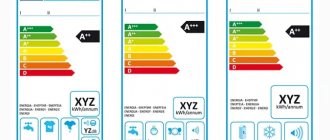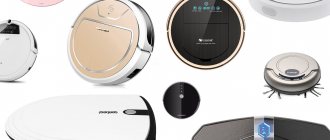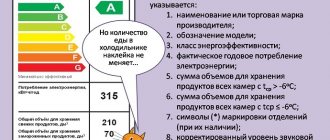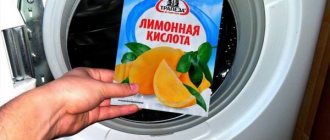Who cares at what speed the meter spins when the washing machine, refrigerator, electric stove, ordinary electric kettle and other home appliances are running, when choosing household appliances, they first look at their energy efficiency indicator.
Energy efficiency and energy classes
The energy efficiency indicator shows how efficiently electricity is consumed when household appliances perform their functions. For example, under equal conditions, two identical-sized refrigerators with different energy efficiency will spend different amounts of kilowatt-hours on cooling food to a given temperature. A refrigerator with a higher energy consumption class will “eat” less electricity. The importance of energy efficiency is important not only for a specific family budget. By using economical household appliances, you also make a significant contribution to preserving the ecology of our planet.
It is very easy to determine the amount of electricity consumed by a device and how efficiently it does it. Just look at the technical documentation to find out an important parameter. Sometimes this is not required; manufacturers willingly supply their products with various stickers indicating the degree of energy efficiency of household appliances. They are made in the form of a color scale indicating Latin letters and indices, indicated by a plus sign.
The most energy efficient devices are class “A”. The presence of a plus next to the letter increases the class; you can find equipment marked “A+”, “A++”, “A+++”. The more advantages, the higher the energy efficiency and price. True, having paid a little more, in the future this overpayment will fully pay off due to energy savings.
The least energy efficient equipment is designated class “G”. Nowadays it is almost impossible to find a refrigerator or automatic washing machine of this class on sale. Low demand for class “G” equipment took its toll and manufacturers abandoned its production or reduced it significantly.
Why is classification needed?
The prestige of a particular premises should be taken into account when organizing your own business. To simplify this process, a classification of offices was invented, which has a scale in the form of Latin letters: A, B, C, D.
Each variety has its own qualities. This classification is rather arbitrary, so groups of non-residential premises have their own subgroups. The same is true for the first two categories - class A and class B offices have several varieties.
Knowledge of the features of each premises should be taken into account when choosing them for a certain type of business. The landlord, understanding what class his property belongs to, can correctly navigate the price. It is also extremely important for owners of various companies to take into account the class of the premises. Indeed, without the appropriate conditions, it is sometimes simply impossible to achieve success.
Reducing refrigerator energy consumption
Among household appliances, the refrigerator constantly consumes electricity. In general, it itself consumes a little kW during operation, but often the user himself contributes to the increase in electricity consumption. Many people, when opening the refrigerator, spend a long time studying what can be eaten in it or remembering where this or that product is located, and accordingly, the longer the door is open, the more cold comes out, which means that the compressor will again need to turn on and bring the temperature inside the chamber to normal.
Experts have calculated that opening the refrigerator door for more than 10 seconds increases its energy consumption by a quarter or more. Old refrigerators waste kW. Their device itself does not particularly provide for low electricity consumption, besides, time does its job. The seals lose their former elasticity, which causes the tightness of the refrigerator and freezer compartments to be compromised.
You can reduce refrigerator appetites by following simple tips.
- Do not open the door frequently or for long periods of time.
- Do not place warm pots and pans in the refrigerator; transfer food to plates or containers, wait for it to cool, and then remove.
- Do not install the refrigerator near heat sources such as a stove or radiator. Also, if the windows face the sunny side, make sure that the sun’s rays fall on the refrigeration equipment to a minimum.
- Carry out timely defrosting.
- Periodically check the integrity and tightness of the rubber seals.
By following these tips it is more than possible to reduce the energy consumption of your refrigerator by up to 30%. Also, it is worth remembering that the energy consumption of a refrigerator is also affected by its climate class. Therefore, when choosing a new unit, it is worth taking this indicator into account. Determine which climate class of refrigerator is best suited for your home. Then choose a model that corresponds to the indicator, and in the further operation of the equipment, adhere to the conditions established by the class.
Fridge
The main kitchen appliance that works around the clock. When choosing, you should focus on an energy efficiency indicator of at least class “A”, the ideal option is “A+++”. Another important point to pay attention to is the number of compressors. Devices with multiple compressors only cool the compartment when the refrigerator is opened; the temperature in the freezer will remain unchanged.
Economical use of the washing machine
Automatic washing machines don't work like a refrigerator all the time, but when they wash, the electric meter is significantly boosted. This happens because several energy-consuming operations are performed. Heating the water, the spinning process, and if the machine also has a clothes dryer, then a lot of kW will be consumed in one washing cycle.
Washing machines also have energy consumption classes, which are designated by a similar gradation as refrigerators. The machines also have a class for drying clothes, if the model has such a function. When choosing a new laundry assistant, be sure to look at the class of the model you like.
Saving on the use of a washing machine is quite simple. For one wash, load the volume of laundry close to the maximum allowable. Washing several light items on long programs is irrational. Don’t forget about express wash modes, which adequately cope with many soiled clothes. Also, don't go to extremes in trying to reduce your washing machine's energy consumption. Do not exceed the permissible amount of laundry per wash.
In many ways it is similar to a washing machine. You can save kW using a dishwasher using special eco modes, which require a full load and washing in slightly hot water. True, it will be difficult to wash heavily soiled dishes in this mode.
Washing machine
It’s good if the washing machine has a quick wash mode, which only allows you to refresh your laundry. It is equally important to pay attention to its capacity: for two people a load of three kilograms is enough, for a large family - from five kilograms or more.
Was adopted, dropped out of college: fascinating stories from the life of the Apple co-founder
Can't remove wrinkles from your waist? Sugary drinks may be the problem.
You can make a soft ottoman out of an old sweater. A very simple way
Ways to reduce the energy consumption of an electric stove
In apartments with electric stoves, most of the energy consumption is associated with the operation of the stove. A number of recommendations will help reduce energy costs.
- Turn off the stove a few minutes before cooking - the food will be cooked through the residual heat of the burner.
- Use cookware that matches the size of the burners.
- Prepare food by covering the container with a lid.
- Do not use cookware with uneven, deformed or heavily soiled bottoms.
By adhering to these recommendations, you can significantly reduce the energy consumption of your electric stove. For example, cooking with a closed lid will reduce energy costs by 2.5 times, and using cookware with a smooth and flat bottom that is free of carbon deposits will save up to 60% of electricity.
Air conditioner
They are divided into inverter and non-inverter, the latter are more affordable. A device with a built-in stabilizer allows you to save up to 60% of electricity. Inverter air conditioners are quieter and more economical, but their price is much higher.
He will fix the dishes and furniture: 2 ways to make cottage cheese glue at home
Just 10 minutes of live phone conversation reduces feelings of loneliness
30-year-old daughter Alexandra Dedyushko has changed in appearance. Doesn't look like dad: photo
Rational use of climate control equipment
It is generally accepted that the peak energy consumption in an apartment occurs during the cold season. Recently, the opposite is often the case, when electricity consumption in summer is comparable to or exceeds winter consumption. The reason is in household air conditioners, or rather in their irrational use. On hot days, many people turn on the air conditioner to maximum and open the window for what they think is the best influx of coolness. It is more practical to turn on the air conditioner by first closing the windows and door to the room where the indoor unit is installed.
During the cold season, you can additionally optimize the energy consumption of heating devices. It is known that heating radiators and electric heaters dry out the air in the room. Many people, trying to improve the microclimate in their apartment in winter, open the window, and as a result, heating devices consume more energy. The best way out of the situation is those who know why they need an air humidifier and actively use this device at home. As a result, a comfortable microclimate is created in the room without drafts and additional waste of electricity.
What does the economical use of household appliances provide?
It happens that it is not possible to immediately optimize energy consumption, especially if you previously used household appliances contrary to the given tips and recommendations. Breaking your habits is not easy, but the results are worth it. By gradually following the advice, you will notice a decrease in your energy bills, and this will already be an additional incentive to optimize the energy consumption of your equipment.
In addition to the financial benefit for yourself, you will contribute to preserving the environment. Electricity production takes its toll on the environment, creating threats of global warming and the greenhouse effect. Such phenomena lead to an increase in the number of natural disasters and cataclysms. Many people do not realize that the normal use of household appliances can somehow affect the environmental situation of the planet. Numbers will help clarify the situation.
Saving one kilowatt hour by one household results in savings of 4 to 6 kWh at the electricity generating facility. The global average of kW/h production is associated with the emission of about 800 g of CO2 into the atmosphere. It turns out that household appliances with energy consumption class “A+” consume an average of 190 kW/h per year. As a result, CO2 emissions are reduced by up to 200 kg compared to the use of devices classified as “B” class.
Consider the energy consumption classes of household appliances when purchasing new appliances and use them wisely. As a result, reducing the energy consumption of home devices will benefit not only the family budget, but will also help preserve the environment on the planet.











